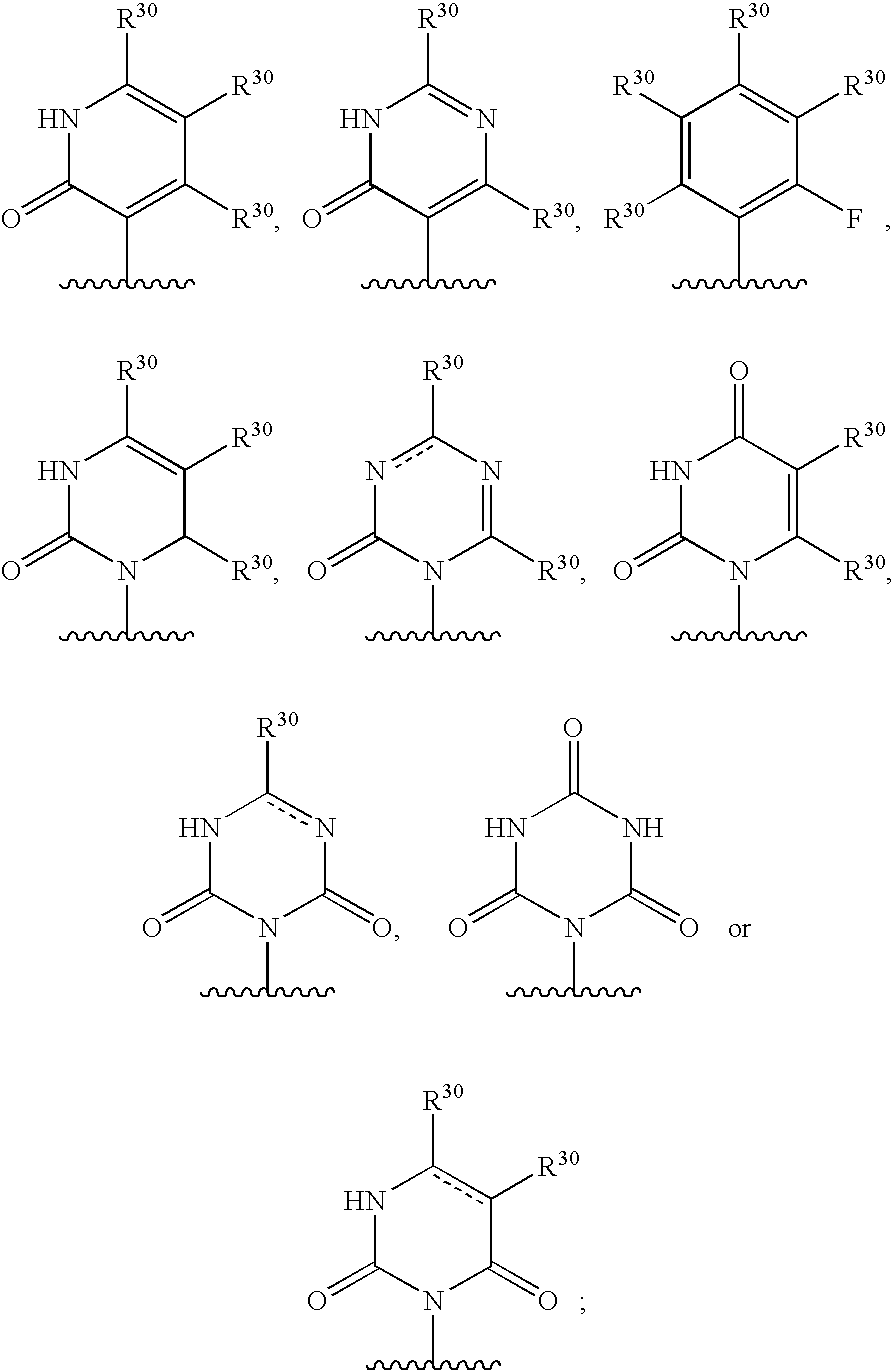2,3-substituted azaindole derivatives for treating viral infections
a technology of azaindole and derivatives, which is applied in the field of 2,3-substituted azaindole derivatives, can solve the problems of poor treatment effect, poor treatment effect of patients suffering from hcv infection, and hcv approach suffer from poor efficacy and unfavorable side effects, etc. vaccine development, however, has been hampered
- Summary
- Abstract
- Description
- Claims
- Application Information
AI Technical Summary
Benefits of technology
Problems solved by technology
Method used
Image
Examples
example 1
Preparation of Compound 10
[0614]
[0615]
[0616]Compound A2 can be made from commercially available 4-nitropyrrole 2-carboxylic acid ethyl ester using the methods described in Moses et al., J. Org. Chem. 53(9):1855-1859 (1988).
[0617]A mixture of compound A2 (1.13 g, 10 mmol) and 1-dimethylamino-but-1-en-3-one (1.54 g, 10 mmol) were heated to 100° C. and allowed to stir at this temperature for about 14 hours. The crude reaction mixture was cooled to room temperature and purified using flash chromatography (0-30% ethyl acetate / hexane as eluent) to provide compound A3 (0.66 g, 32% yield). MS: 205.1 (M+H)+.
[0618]
[0619]5-Methyl-1H-pyrrolo[3,2-b]pyridine-2-carboxylic acid ethyl ester A3 (0.081 g, 0.4 mmol) was dissolved in acetonitrile (4 mL) at room temperature. To the resulting mixture was added N-bromosuccinimide (0.086 g, 0.48 mmol) and the resulting suspension was stirred at room temperature for 3 hours. The reaction was then quenched by addition of aqueous saturated sodium thiosulfate s...
example 2
Preparation of Compound 4
[0626]
[0627]
[0628]5-Methyl-1H-pyrrolo[3,2-b]pyridine-2-carboxylic acid ethyl ester B1 (0.204 g, 1 mmol) was diluted with acetonitrile (10 mL). To the resulting solution was added N-bromosuccinimide (0.214 g, 1.2 mmol) and the resulting suspension was stirred at room temperature for 3 hours. The reaction was quenched by addition of aqueous saturated sodium thiosulfate solution (10 mL) and the reaction mixture was concentrated in vacuo. The crude residue obtained was diluted with ethyl acetate (50 mL) and the layers were separated. The aqueous layer was extracted with ethyl acetate (50 mL) and the combined organic layers were then washed with aqueous 1N sodium bicarbonate solution (10 mL), then brine (10 mL). The organic solution was then dried (magnesium sulfate), filtered and concentrated in vacuo to provide crude bromo intermediate B2 (0.32 g, quantitative). MS: 283.09 (M+H)+.
[0629]Compound B2 was diluted with 1,2-dimethoxyethane (5 mL) and to the resulting...
example 3
Preparation of Compound 3
[0637]
[0638]
[0639]5-Methoxy-1H-pyrrolo[2,3-c]pyridine-2-carboxylic acid C1 (0.4 g, 2.08 mmol; prepared according to the method described in Frydman, et. al; J. Am. Chem. Soc., 87(15):3530-3531 (1965)) was dissolved in MeOH (10 mL) and to the resulting solution was added thionyl chloride (1 mL, excess) dropwise. The resulting suspension was allowed to stir at room temperature for 48 hours. The reaction mixture was concentrated in vacuo and the residue obtained was portioned between ethyl acetate and saturated aqueous NaHCO3 solution. The organic layer was washed with water, dried (MgSO4) and concentrated in vacuo to intermediate compound C2 (0.34 g, 1.64 mmol). MS: 207.13 (M+H)+.
[0640]Compound C2 was diluted with chloroform and to the resulting solution was added N-iodosuccinimide (0.388 g, 1.72 mmol). The resulting reaction was allowed to stir at room temperature for about 20 hours. Aqueous saturated sodium thiosulfate solution (10 mL) was added to the react...
PUM
 Login to View More
Login to View More Abstract
Description
Claims
Application Information
 Login to View More
Login to View More - R&D
- Intellectual Property
- Life Sciences
- Materials
- Tech Scout
- Unparalleled Data Quality
- Higher Quality Content
- 60% Fewer Hallucinations
Browse by: Latest US Patents, China's latest patents, Technical Efficacy Thesaurus, Application Domain, Technology Topic, Popular Technical Reports.
© 2025 PatSnap. All rights reserved.Legal|Privacy policy|Modern Slavery Act Transparency Statement|Sitemap|About US| Contact US: help@patsnap.com



